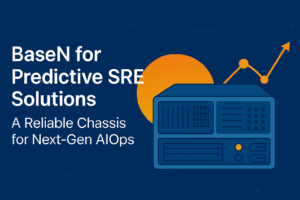For years, network operations centers (NOCs) have relied on dashboards. Blinking lights, real-time graphs, and a flurry of alerts – they’ve been our window into the complex, ever-shifting landscape of telecommunications networks. And while dashboards are invaluable for providing situational awareness, they largely represent a reflective view: telling us what is happening or what has just happened.
But what if your network could tell you what’s about to happen? What if it could proactively optimize itself, predict potential bottlenecks, and even identify nascent opportunities for growth? This is where the power of proactive digital twins truly revolutionizes network management, taking us far beyond the limitations of reactive monitoring.
From Reactive to Proactive: The Digital Twin Evolution in Telecom
The concept of a digital twin – a virtual replica of a physical asset, system, or process – has deep roots, tracing back to NASA’s Apollo program, where understanding and monitoring complex systems was paramount. In the telecommunications sector, this foundational idea has evolved dramatically. We’re moving beyond merely mirroring network components (the reflective twin) to building sophisticated, intelligent replicas that can simulate, predict, and even intervene (proactive twins).
At the heart of this proactive revolution is telemetry data. Imagine a constant, high-fidelity stream of information flowing from every corner of your network: router performance, latency, packet loss, traffic patterns, device health, even environmental conditions. This granular data, when fed into a sophisticated digital twin, becomes the fuel for unprecedented insights.
Predicting the Future: Optimizing Traffic Before Congestion Hits
A traditional network management system might flag a congestion issue after it occurs, leading to frustrated customers and service degradation. A proactive digital twin, however, uses historical telemetry data, real-time feeds, and advanced analytical models (including AI and machine learning) to predict future traffic demands and potential points of failure.
Consider a scenario: a surge in mobile data usage is anticipated in a specific urban area during a major event. A proactive digital twin, having analyzed past event data and current trends, can simulate the impact of this surge on various cell towers and backhaul links. It can then recommend, or even automatically trigger, resource reallocations – shifting bandwidth, activating dormant capacity, or rerouting traffic – before any service interruption occurs. This isn’t just optimization; it’s predictive optimization.
Unlocking New Revenue Streams: Beyond Connectivity
The ability to deeply understand and predict network behavior opens up entirely new business opportunities for telecommunications companies. It’s no longer just about providing reliable connectivity; it’s about leveraging network intelligence as a strategic asset.
- Enhanced Service Level Agreements (SLAs): With the predictive power of proactive digital twins, telcos can offer guaranteed performance levels with greater confidence, leading to premium SLA offerings for enterprise clients who require consistent, high-availability networks.
- Edge Computing Optimization: As edge computing becomes more prevalent, proactive digital twins can simulate the optimal placement of edge nodes and workloads, ensuring low latency and high performance for applications like autonomous vehicles or real-time industrial IoT. This enables new service offerings for specific industry verticals.
- Dynamic Network Slicing: For 5G networks, proactive digital twins are crucial for dynamically allocating and managing network slices based on specific application requirements (e.g., a high-bandwidth slice for live broadcasting vs. a low-latency slice for critical IoT). This allows for highly customized and monetizable network services.
- Proactive Security: By simulating potential attack vectors and predicting vulnerabilities based on network behavior anomalies, proactive digital twins can significantly bolster cybersecurity, leading to new security-as-a-service offerings.
The Road Ahead: Responsible Innovation
The deployment of proactive digital twins also carries significant responsibilities. As emphasized in broader industry discussions, companies must ensure efficient and environmentally friendly processes. By optimizing network operations and anticipating resource needs, digital twins contribute to more sustainable practices by reducing energy consumption and minimizing waste.
The era of merely observing network performance from a dashboard is fading. Proactive digital twins, fueled by rich telemetry data and sophisticated analytics, are empowering telecommunications companies to move beyond reactive problem-solving to intelligent anticipation, unparalleled optimization, and the creation of entirely new avenues for growth and innovation. The future of network management isn’t just smart; it’s predictive, proactive, and powerfully transformative.




